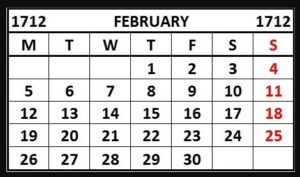Today would be July 15, 2025, if we had never had leap years.
We all learned in school there are 365 1/4 days in a year. Actually, 365 days, 5 hours, 48 minutes, and 45 seconds, but close enough, kind of. For those who like decimals, there are about 365.2422 days each year.
365.2422 days each year.
Julius Caesar saw the problem and was tasked with getting the Roman calendar caught up. Until then, the Romans had been using a lunar calendar. So, in 46 B.C., Caesar added 80 days to the calendar in what became known as the “year of confusion.” That was because he got it wrong by using 1/4 day, and adding 80 days throws people off more than a tad.
The days eventually got off kilter again, so another correction was made in 1578. This one is weird, and I learned it when my dad explained it to me. A leap year is every four years, but we don’t have one if a year ends in 00, like 1700, 1800, and 1900. But, if it’s a millennial year, like 2000, we have one. American colonies made the switch in 1752. By then, they had to skip 11 days to catch up with the new Gregorian calendar. Without the changes where I live now, we’d have snow today, July 15. 2025.
Does anyone want to learn about leap seconds now?
February 30 Has Happened Twice.
Twice in history have countries had to arrange for February 30. In one case, the day occurred as part of the conversion between the Julian and Gregorian calendars; Sweden had to add the day in
 1712 because it made the wrong years leap years during its initial attempts to convert in 1700. This messed up the country’s calendar so badly that everyone had to return to the Julian calendar temporarily. In 1712, the country changed the official Gregorian calendar and added two leap days- February 29 and 30- to catch up.
1712 because it made the wrong years leap years during its initial attempts to convert in 1700. This messed up the country’s calendar so badly that everyone had to return to the Julian calendar temporarily. In 1712, the country changed the official Gregorian calendar and added two leap days- February 29 and 30- to catch up.